Over Chinese New Year my mom and a family friend (former babysitter, but if I say babysitter you’d probably think: “What? She still needs a babysitter? Isn’t she 23?”) came to visit and together we went to Thailand and then Cambodia. It was one of the best vacations I’ve ever had, I think because it was exploring a new realm of the world that has a much different culture (South East Asia). These are some thoughts/highlights from the Thailand portion.
My mom booked us private tours, so we had a guide named Lee great us at the airport. He spoke quietly and calmy; his voice was serene. Which is why I was surprised when one of his first comments to us was about the Chinese tourists in the airport. “Quick,” he said after a group went down the escalator. “Before more Chinese cut us off.” This type of comment would continue the entire time we were in Thailand. “Quick, sit down on this bench before the Chinese do.” I was very taken aback by this. I planned not to say anything, just get through the four days quietly. He didn’t say these things with a sneer or any hatred, but rather matter-of-factly, like, “this is what they do.” But my mom told him it made me uncomfortable when he said these things about Chinese tourists and he explained that they are very rude. I figure that’s his lived experience. He’s a tour guide round the clock during peak season, he’s seen hundreds of Chinese tourists, he has a right to form an opinion based on his experience. But I guess my problem with that is the fact that you don’t see each person as an individual when you resort to stereotypes like that. Like, a Chinese tourist that is incredible not rude would still be seen as rude in Lee’s eyes because, he or she is a Chinese tourist.
Regardless, during those four days I did notice things that tourists did that were uncouth, and many times they were Chinese tourists. Like taking a picture of the Emerald Buddha. I would post a picture in this blog post, but we were not allowed to take a picture of it. Did that stop several tourists from trying to take a picture? No, because people (Chinese and European/American alike) are rude.
In Thailand we also went to the floating market where I learned how to better haggle. Just. Walk. Away. I’m sure I was still overpriced (I don’t think I got really good until our last night in Cambodia), but I learned whatever I value a piece at is how much I should pay and if that’s not what they’re selling it for, just walk away. I got some pants and shorts with vibrant colors and elephant prints on them, including this sick Princeton reunions outfit:

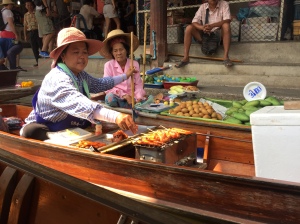
We visited one (non-floating) market that is set up on active train tracks. At the Railway Market, street vendors are literally set up on railway tracks. So when the train comes by, the vendors and people all need to get off to the side. But all the tourists want to get pictures/video of the train. I thought the space the vendors cleared off would be enough for the tourists to stand and watch. So I stood there until a vendor said: “You need to come inside” so I did because I follow directions.

But other people don’t because they are (insert your own adjective here). (These were European/American tourists, not Chinese tourists FYI.) So the vendor that told me to come inside had to HIT THEM WITH A CANE to get them to go inside the little tent area. They almost got run over by the train, no joke. It was much bigger than I expected and it was gone within seconds. When it was over and the vendors were setting up their umbrellas on the tracks again, I asked the vendor: “Every time the train comes, does this happen? Do you have to beat people back everytime?” And she smiled, nodded, and said: “Yes.”
***
We went to the Bridge over the River Kwai. I recorded this thought that day:
I step out of the van and I hear “Brick House” by Rick James blasting. Vendors are selling t-shirts and soda. Tourists mill about on the black steel bridge. Italians, Germans, French, Australians, Americans, Chinese, stop to take selfies and other pictures. “Brick House” ends and “My Sharona” begins. I take a few pictures, but I can’t get any without either tourists, vendors, river front restaurants, or a Chinese Buddhist temple set up on the other side of the river. I keep walking across the black bridge. About halfway, I cease to hear the famous My Sharona riff, or, it’s drowned out by the sound of music and chanting from the temple. I stop, close my eyes, and try to imagine the place in 1943. Impossible. Like trying to smell wild onion on Chicago’s Michigan Avenue. I keep walking down the length of the bridge to the other side of the river. The temple music fades and the tourist noise is non-existent. Fields of corn, tapioca, and sugar cane flank the railroad tracks. I could keep walking on the tracks until I reach Burma. The smell of burning garbage reminds me of Kenya, as does the yellow dirt road that runs parallel to the railroad. This isn’t even the bridge. The Allies bombed the real bridge – the one POWs built – in 1945. And in the 1950s, tourists came to the River Kwai expecting to see the famous bridge, but it was gone. So they built the bridge I’m standing on. It was not built by poor Thai and Burmese laborers and POWs for the Japanese war machine. It was built by poor Thai and Burmese laborers for the international tourist machine. They even built little platforms along the side of the tracks for people to take photos from.
I walk back, and when I cross the halfway point of the bridge, I hear Blondie’s “Call Me.” A man tries to sell me a Sprite. I get back in the tour van.
***
“Never have I dreamt that I would see the day when human life would be held so cheaply.” – Major A.E. Saggers, 1943.
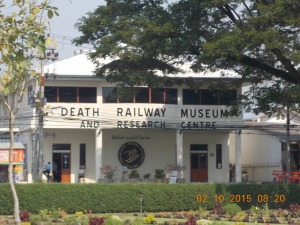
More informative than the physical Bridge over the River Kwai was the museum associated with it. I believe it is funded by the Dutch. Dutch, British, and Australian troops were the ones that were taken here to build the railroad. I could’ve spent hours in the museum, but we had a schedule. One quote on the wall read: “Leave at night. Weather terrible. Track nothing but mud. Cannot see. Boys tired. This is murder. Help one another along.” Eric Stone, the person who wrote this in his journal, was part of a group that trekked 300 kilometers in 17 days. Malnourished, diseased, and carrying their whole camp on their backs, I can understand how that could be murder. There was a section of the museum about medical practices in the camps and I was surprised by the ingenuity of the camp doctors. Distilled water for saline came from stills made of petrol cans and fuel lines, and the saline was dispensed through old beer bottles and stethoscope tubes. A stolen bike was turned into a centrifuge to make blood plasma. Fascinating.
***
After the museum we got to swim in the River Kwai and that was nice. Except that Lee kept teasing that there were alligators and so that was a bit freaky. But generally it was refreshing on such a hot day.

***
Driving through Thailand, I saw two things that I think are of note.
1) The King is REVERED. I didn’t realize they had a king (I forgot that The King and I takes place in Thailand). Businesses have pictures of the King at various stages of his life (when he was a monk, when he was a young king, etc.) as a sign of respect, almost like the establishments in Taiwan that have the Buddha. I’m not saying that the King is more important than the Buddha. Buddha is definitely more important in Thailand. But, like Buddha, you can’t say anything bad about the King. This struck me at first, like, “WHAT?” I don’t know the extent of this. I think it may just be an unwritten law. More like a code of conduct that any punishable offense. But I still thought it was a little wack. What if he’s horrible? I guess the current King is pretty great so it’s not a big deal. But the Crown Prince is supposedly not very liked. I asked Lee how he knew that if you weren’t supposed to talk negatively of the royal family. He responded that you can, just you don’t do it on the street, you just do it with your friends. Then I thought that actually makes perfect sense. You can’t change your King. If you speak negatively of him, you just kinda bring down the whole morale of the nation. And since he’s not super important (obviously you don’t want someone horrible, but just someone who’s a lazy playboy is not so bad) it’s OK if he’s not great.
2) DON’T BUY BUDDHA. This message was on a billboard I saw as we drove out of the airport and I continued to see this message reiterated again and again. “DON’T GET BUDDHA TATTOO. DON’T BUY BUDDHA. DON’T SELL BUDDHA. BUDDHA IS SACRED.” I had realized this upon arriving in Taiwan in August (that in the West, the Buddha is this symbol, but not necessarily respected the way it ought to be, i.e. given context, used by people who actually know about / study Buddhism beyond major tenents), but nowhere in Taiwan do they beg you not to buy or sell it. Who knows how many tourists actually respect this request.
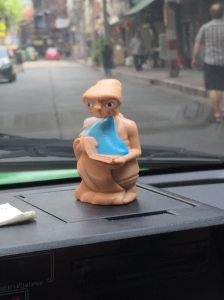
***
Thailand was very cool. I think I had this perception of Bangkok, from nothing in particular, just pop cultural portrayals of SE Asia. I think I just worried it might be dangerous and/or not very clean. But from the parts I explored and what we drove through, it felt the same as Taipei, although a little more cramped. Overall, I would go back in a heartbeat.
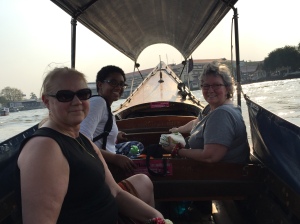
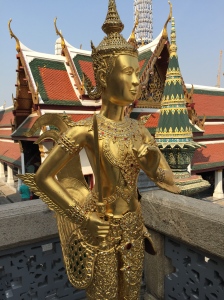
Leave a comment